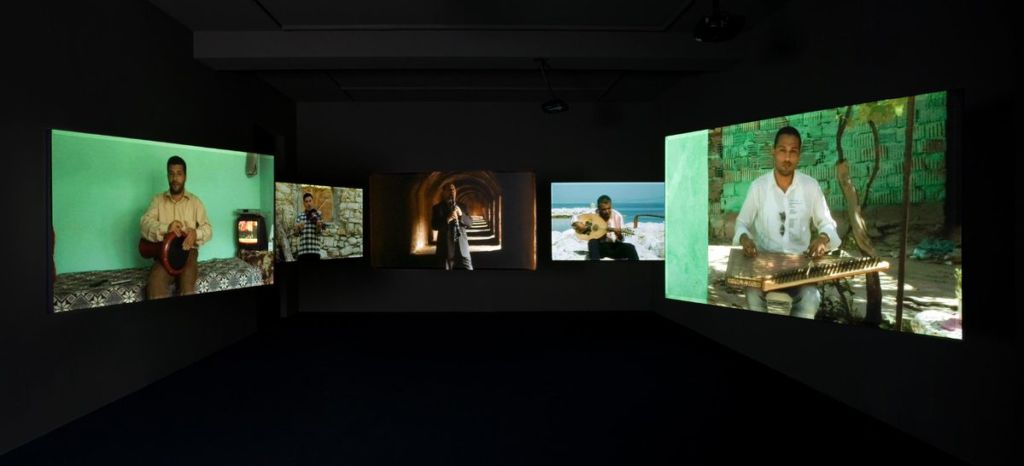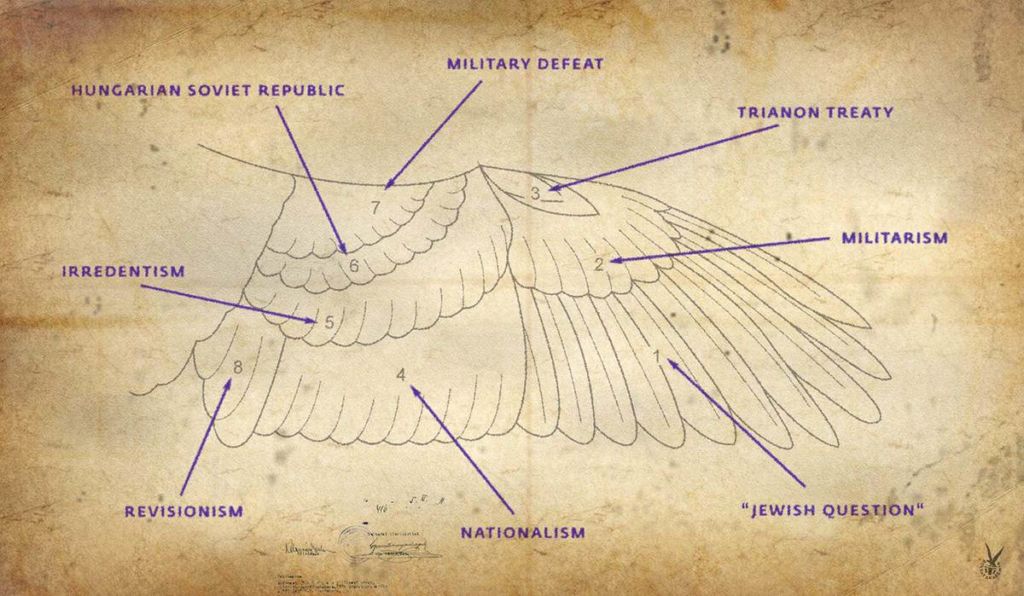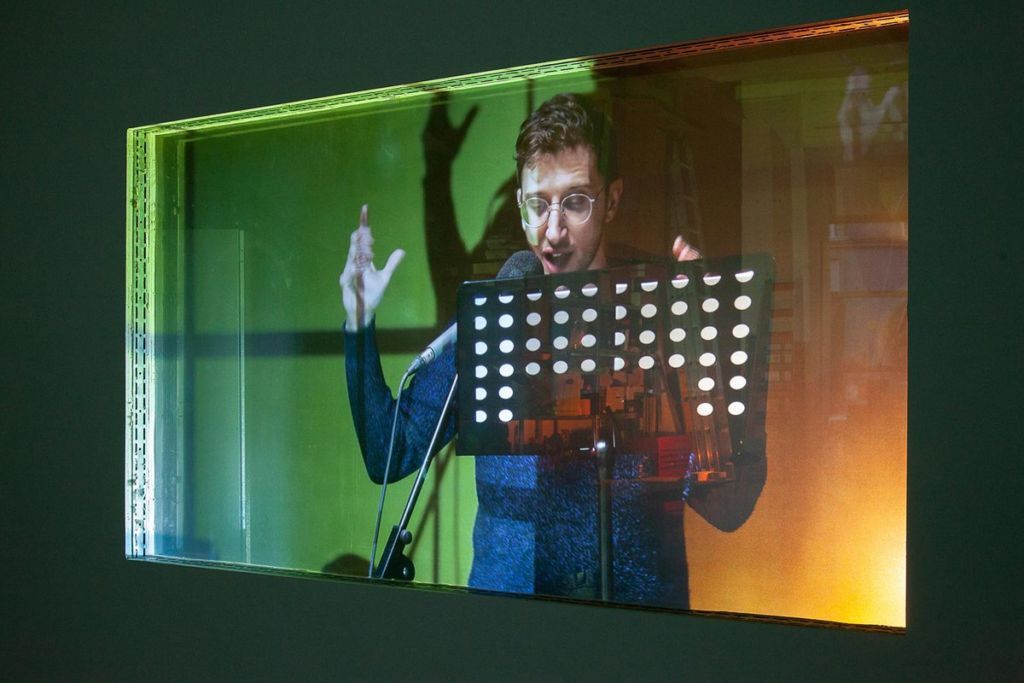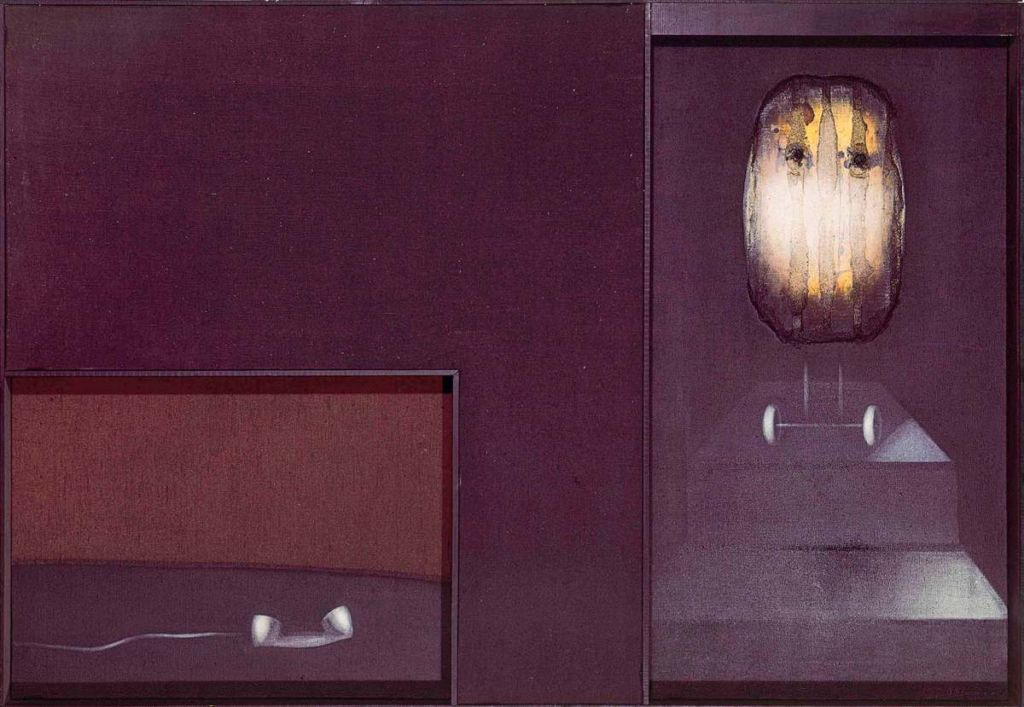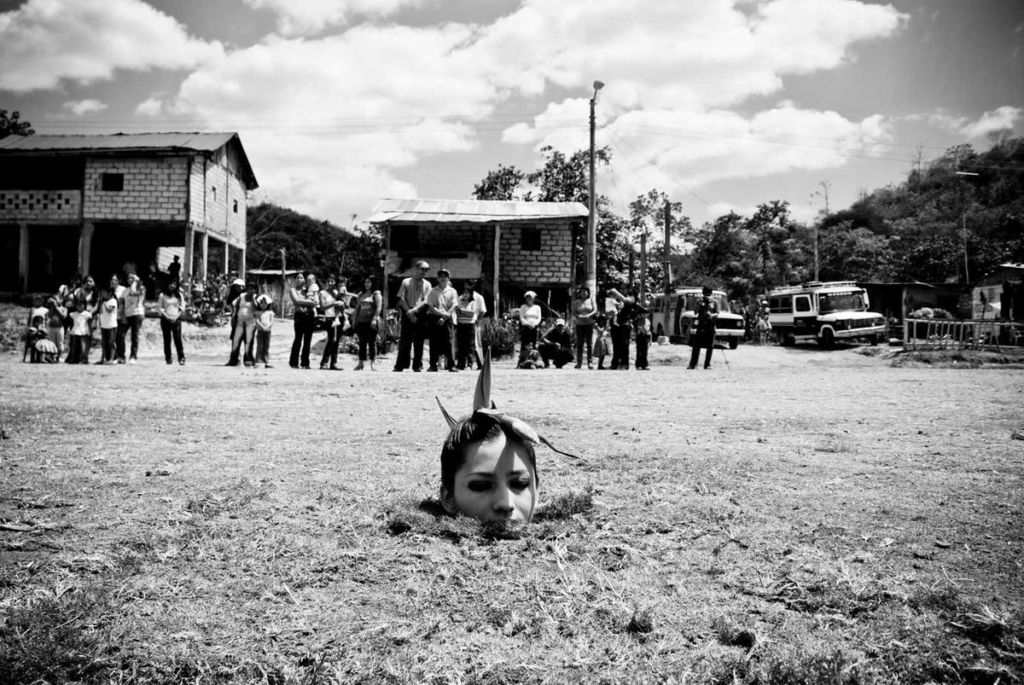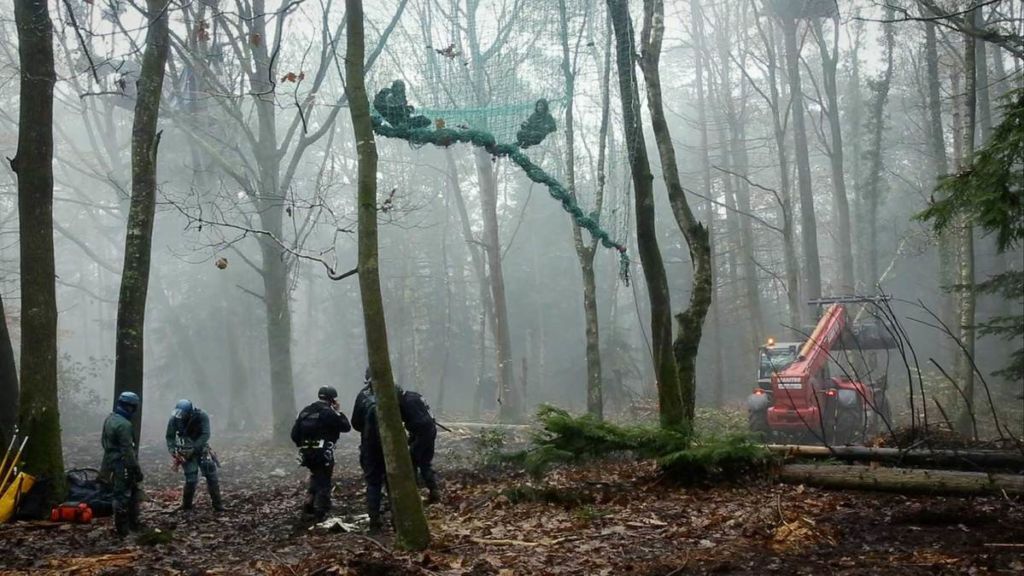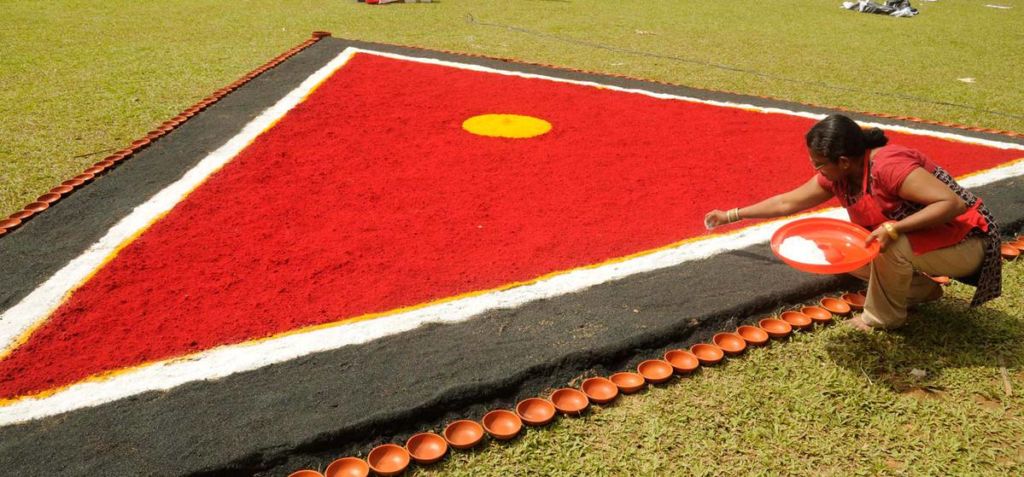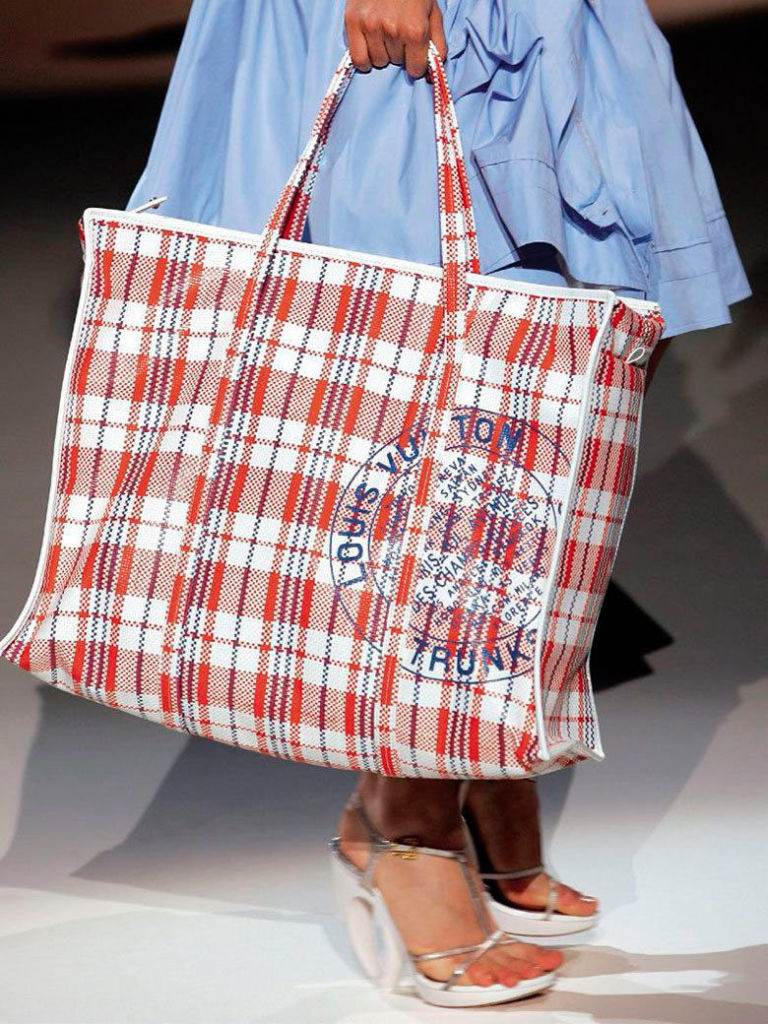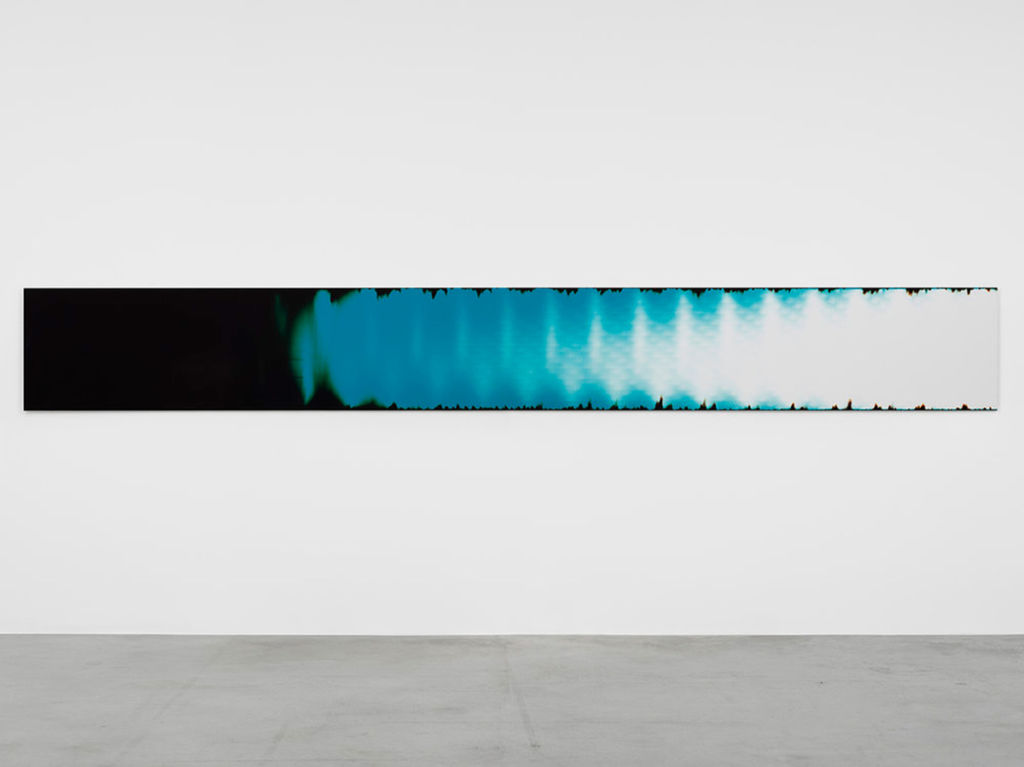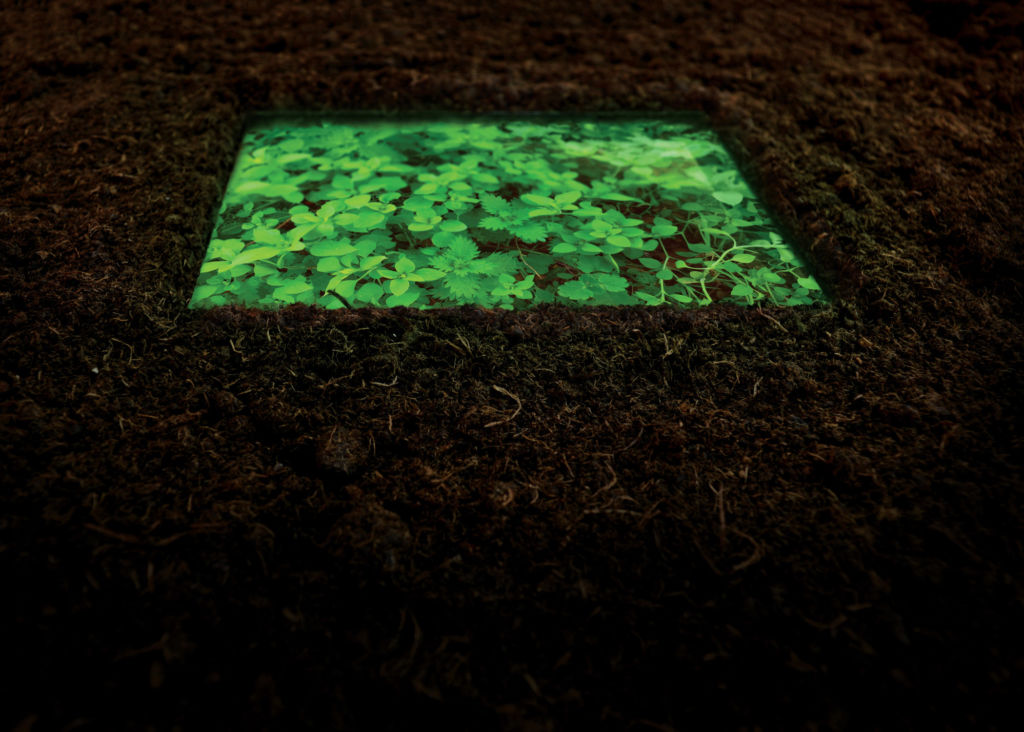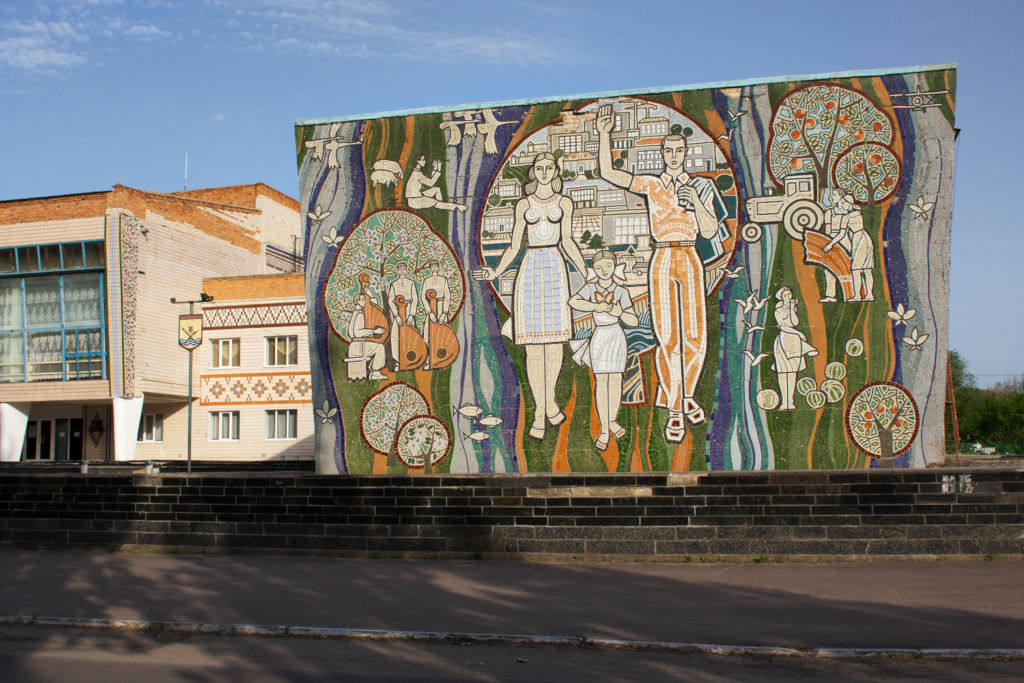Magnet-Sounds The Migration of Sounds in Ergin Çavuşoğlu’s Video-Installations
Investigation par Nermin Saybaşılı
In his video installations, Turkish artist Ergin Çavuşoğlu weaves together issues of exile, migration and memory, with music, sounds and words. A way for the artist to include the visitors, as viewers/listeners in an experience of finding their place in a contemporary concert of troubled becomings.
R. Murray Schafer, Our Sonic Environment and the Tuning of the World [1977] (Rochester: Destiny Books, 1994), 227.
Henri Lefebvre, Rhythmanalysis: Space, Time and Everyday Life, trans. Stuart Elden and Gerald Moore (London, New Delhi, New York and Sydney: Bloomsbury, 2013), 45. First published in French as Éléments de rythmanalyse. Introduction à la connaissance des rythmes (Paris: Éditions Syllepse, 1992).
Henri Lefebvre and Catherine Regulier, “Attempt at the Rhythmanalysis of Mediterranean Cities,” in Rhythmanalysis: Space, Time and Everyday Life, op. cit., 94.
Ibid., 94-95.
Lefebvre and Regulier, op. cit., 87.
The soundtrack of the film is taken from the albums of the American chamber music band Rachel’s, Handwriting (1995) and The Sea and the Bells (1996).
Kathleen Coessens, “Exploring Musical Integrity and Experimentation,” in Sound & Score: Essays on Sound, Score and Notation, Ed. Paulo de Assis, William Brooks and Kathleen Coessens (Leuven University Press: Orpheus Institute, Ghent, 2013), 62-63.
Michel Chion, Audio-Vision: Sound on Screen, trans. Claudia Gorbman (New York: Columbia University Press, 1994), 223.
Ibid., 70-71.
Michel Chion, Film: A Sound Art, trans.Claudia Gorbman (Columbia University Press: New York, 2009), 248.
Lefebvre, op. cit., 87.
Evrim Hikmet Öğüt, “Müzik Göçmenin Ne İşine Yarar?” [What Purpose Does Music Serve for the Migrant?], Birikim, issue 320, December 2015, 72.
Lefebvre, Rhythmanalysis, 16.
These musical instruments are not only classical instruments included in Turkish music such as qanun and violin but also local instruments such as darbuka [goblet drum], dayereh, davul and cümbüş.
Sarat Maharaj, “Perfidious Fidelity: The Untranslatability of the Other,” in Stuart Hall and Sarat Maharaj, Modernity and Difference. Annotations 6 (London: IIVA, 2001), 28. Maharaj speaks of translation and the notion of “untranslatability” arguing that “self and other could never translate into or to know each other. This sense of opacity served to underpin its doctrine of an absolute ‘epistemic barrier’—grounds for institutionalizing a radical sense of ethnic and cultural difference and separateness.”
“The sound has migrated,” a renowned Uyghur doctor told me after listening to my body, including my heart rhythm, by using a technique based on the methods of Avicenna. And as those words had spilled from his lips in a soft and calm tone more akin to a whisper, their meaning had appeared even more spiritual to me. Later, modern medicine would confirm his diagnosis, albeit on a dry and cold piece of paper full of data.
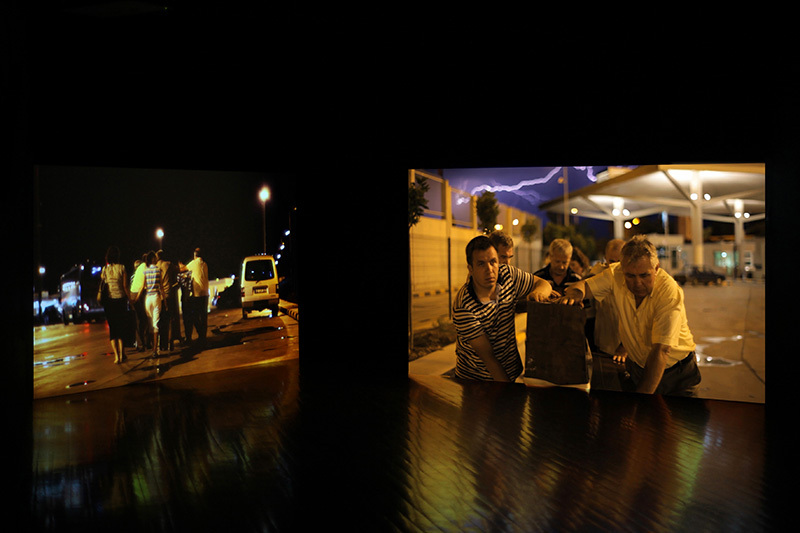
Ergin Çavuşoğlu, Liminal Crossing, view from the video-installation , 2009.
The body is constantly in motion but also makes sound. It is an aggregate of rhythms: the heart’s rhythm, the rhythm of breathing and the rhythm of the nervous system. Each one of them joins the others within us, but also the cultural rhythms around us, whether random or programmed, with different tempos, and operate in tandem with them, or separately, and at times, against them. The Uyghur doctor imagined my body as a sound chamber and established his diagnosis by listening to the rhythms emanating from it. The sound had migrated because my body’s sounds were not where they should have been, they were not keeping the beat as they should have.
The body is also the origin of music. Canadian composer and theorist Richard Murray Schafer, who in the 1970s introduced the concept of “soundscape,” underlines the fact that pulse had a powerful impact on tempo in music—before the invention of the metronome, a tempo was set according to pulse.1 Thus, bodily sound has its rhythms. And these rhythms, as Henri Lefebvre discusses in his small but important book titled Rhythmanalysis: Space, Time and Everyday Life (1992), are not only natural, concrete and biological, but also abstract, ideological, social, cultural, mechanic and technological. In proposing “rhythmanalysis” as a new field of knowledge, Lefebvre writes: “Everywhere where there is interaction between a place, a time and an expenditure of energy, there is rhythm.”2 In Lefebvre’s conceptualization, rhythm is another name for the integral construction of time, movement and being. Thus, it is essential to keep in mind the distinction between lived time—a time which is marked by rhythms and pulsations, a time our body can feel—and exterior and linear time.
In the article titled Attempt at the Rhythmanalysis of Mediterranean Cities (1986), Henri Lefebvre and Catherine Régulier depict the portrait of the rhythmanalyst “who strolls with his thoughts and his emotions, his impressions and his wonder, through the streets of large Mediterranean towns”3 as follows:
More sensitive to times than to spaces, to moods than to images, to the atmosphere than to particular events, he [the rhythmanalyst] is strictly speaking neither psychologist, nor sociologist, nor anthropologist, nor economist; however he borders on each of these fields in turn and is able to draw on the instruments that the specialists uses. (…) He is always ‘listening out,’ but he does not only hear words, discourses, noises and sounds; he is capable of listening to a house, a street, a town as one listens to a symphony, an opera. (…) He does not only observe human activities, he also hears [entend] (in the double sense of the word: noticing and understanding) the temporalities in which these activities unfold.4
A kind of magnetic transitivity based on the push-and-pull between the general and the particular emerges in the video-installations of Ergin Çavuşoğlu, which could be described as a rhythmanalysis in all their various dimensions and intricate realities. In those installations, we recognize how the synchronous existence of various rhythms, their dissociation and differentiation weave our world. The artist “sculpts” space with time, thus drawing us into or casting us out of events, conditions and tempos. In videos where space, time and corporeality are perceived in mutual interaction, the synchronous togetherness of the viewer/listener and the viewed/listened allows us to read space from within time and time along with space.
“Magnet-sounds” are an exception, a “surplus sign” in the invisible field of hearing as well as the visible field of sight; they are an extension, a supplementation to given languages and bodies. This concept emphasizes the unique materiality and presence of sound and its unique relationality rooted in vibration, and also points, from a remote externality to bodily contact or course of mobilization to action. An audio-visual artwork can create an intense magnetic field of push and pull. Therefore, art works that are composed of “mobile forms,” each moving like a magnet (objects, bodies, voices, spaces, places) and therefore assuming a “plural form,” require a different type of viewer/listener. In the visual world, forms are sharp and definite. However, sound cannot be entrapped by the fixedness of things and the visibility of bodies, and thus, is not stuck on the scene of the event. Therefore, when it comes to sound, the body, precisely like the image, object, or space, is never a given.
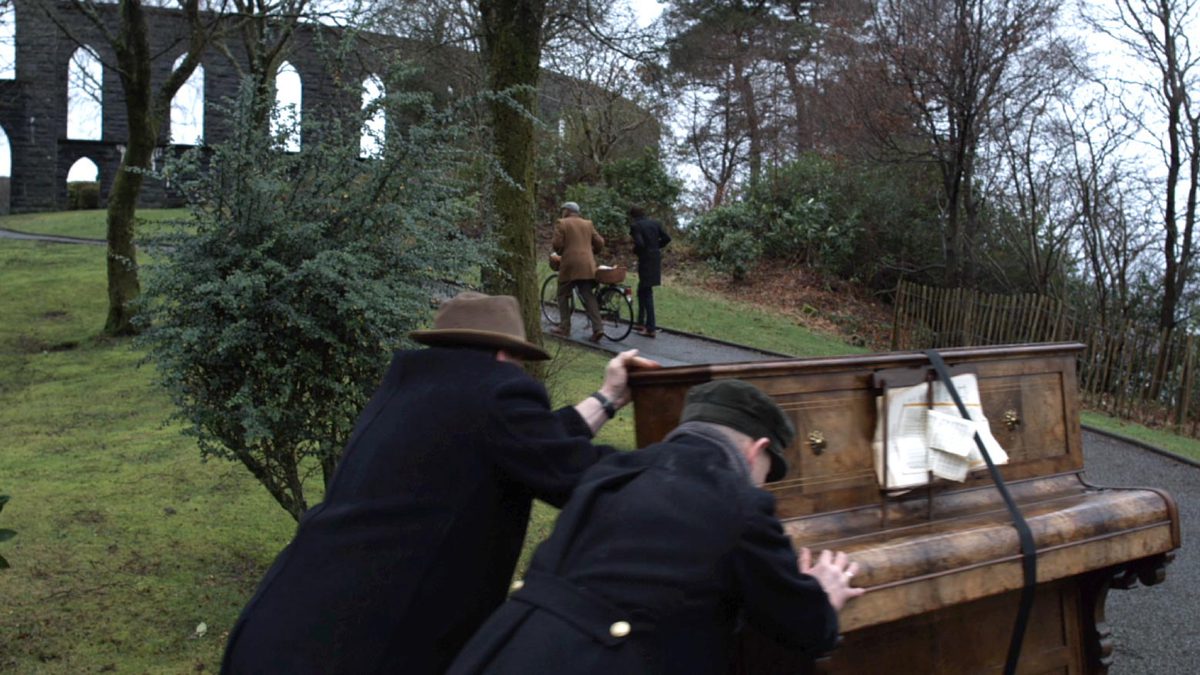
Ergin Çavuğlu, Voyage of No Return, detail from video-installation, 2009.
The main focus of Çavuşoğlu’s artistic practice is, as much as an examination of a certain place or space, also the connection of that place or space, in both a spatial and temporal sense, to the gallery space, with moving images, sounds, words, language and music. In this way, the viewers/listeners experience the borders, limits and border-passes of a place or space almost in person by passing between multiple screens, and are encouraged to contemplate the different forms of traveling, moving and migrating.
The artist, in order to find the rhythm of movement in space, masterfully “migrates” sounds and images. In the videos, we observe and experience how individual stories, often narrated in a poetic, and sometimes theatrical style, form the background of social and cultural powers. One could also imagine that the artist’s own story of migration has shaped the fluid texture of his films. Born in Bulgaria in 1968, Çavuşoğlu completed his classical art training in Sofia, then emigrated and studied in Istanbul, before continuing his art education in London and settling there.
Since rhythm contextualizes issues of change and repetition, identity and difference, continuity and opposition, as Lefebvre argues,5 “the migration of sounds” brings into action a difference that will provide an alternative to linguistic/visual representation and communication, and set alterity into motion. In Çavuşoğlu’s videos, not only people but also objects, sounds, music and ideas, too, “migrate.” Therefore, the reorganization of structures of space, time, action, movement and sound in a non-linear temporality in a gallery, opens the critical channels necessary to think what it means and could mean to settle in space and/or move in space.
The “Threshold-Sound”: The Unplayed Piano
The rhythm of the universe is magnetic; it both brings together and separates. It may appear that everything is in a standstill, yet the reality is quite the opposite—the land below us, the mountains and the seas are in constant motion. This also corresponds to our modern everyday life: objects and capital, just as people, move, and are forced to move, from one place to another. Political, economic, social and cultural structures set and reset, in every instance, the coordinates of things, languages and bodies. In his works, Çavuşoğlu audio-visually maps this dense field.
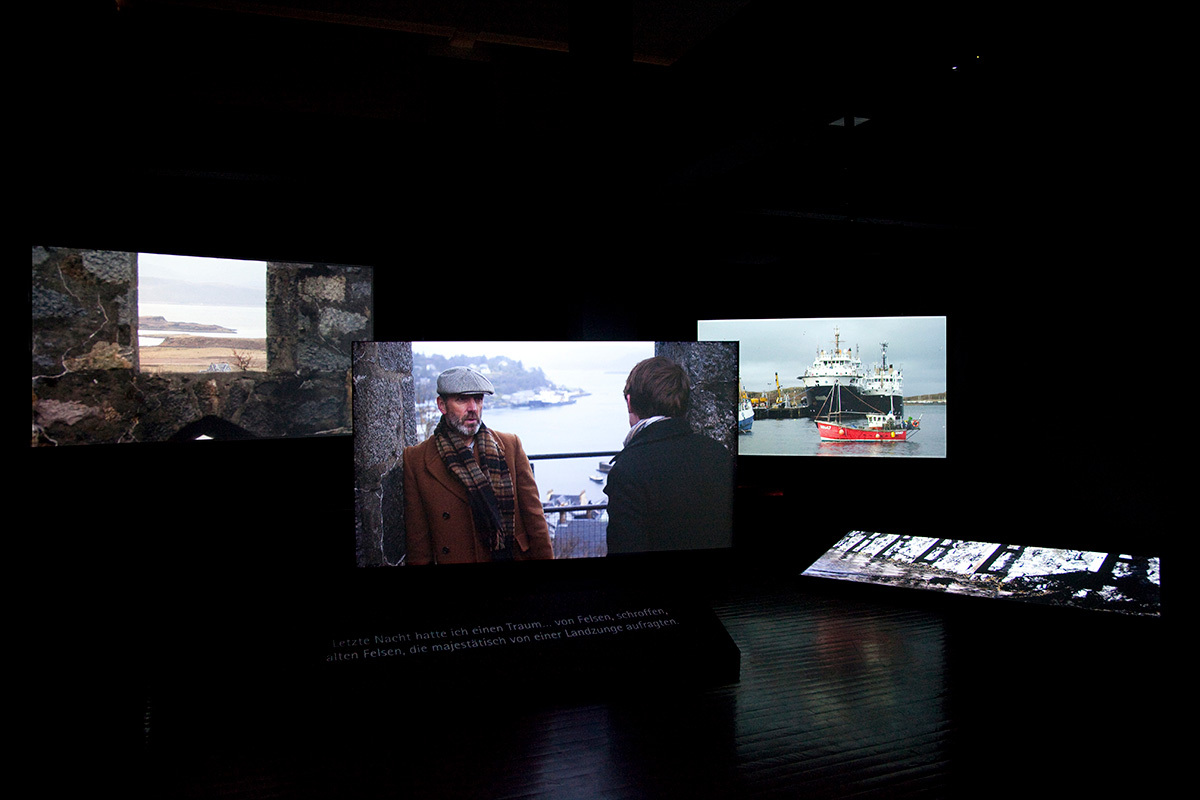
Ergin Çavuğlu, Voyage of No Return, detail from the video-installation, 2009.
The two-large-screen video-installation Liminal Crossing (2009) tells the story of the forced migration of the Turkish minority from Bulgaria to Turkey in 1989. The film shows men and women carrying a piano across the border between the two countries. The piano that belonged to the artist’s sister had to be carried exactly the same way during the family’s migration to Turkey. Across the two screens we see five men accompanied by two women pushing an upright piano. Other than ambient sound, we do hear the conversation of the men. But the sound of the traffic and rain drowns the sound of their voices, transforming it into a murmur.
Murmur has a low frequency; thus, it is among the most difficult sounds to decipher, yet its journey in space is much easier and more seamless compared to high-frequency sounds. We tend to omit murmurs. Therefore, words transformed into murmur imply that the speeches of the moving subjects are faltering, that their words are hesitantly suspended in mid-air, but, at the same time, their voices are cast into the future. The transported piano is completely silent; we can just hear the sound made by the wheels of the long thin platform it is placed on scraping the concrete road. The scraping noise can be read as the sound of the tough path of migration, and of tired bodies in motion. During the short break whilst the man rest, we see the young girl lifting the lid of the piano and touching the keys, however, it is impossible for us to tell whether the piano produces a sound.
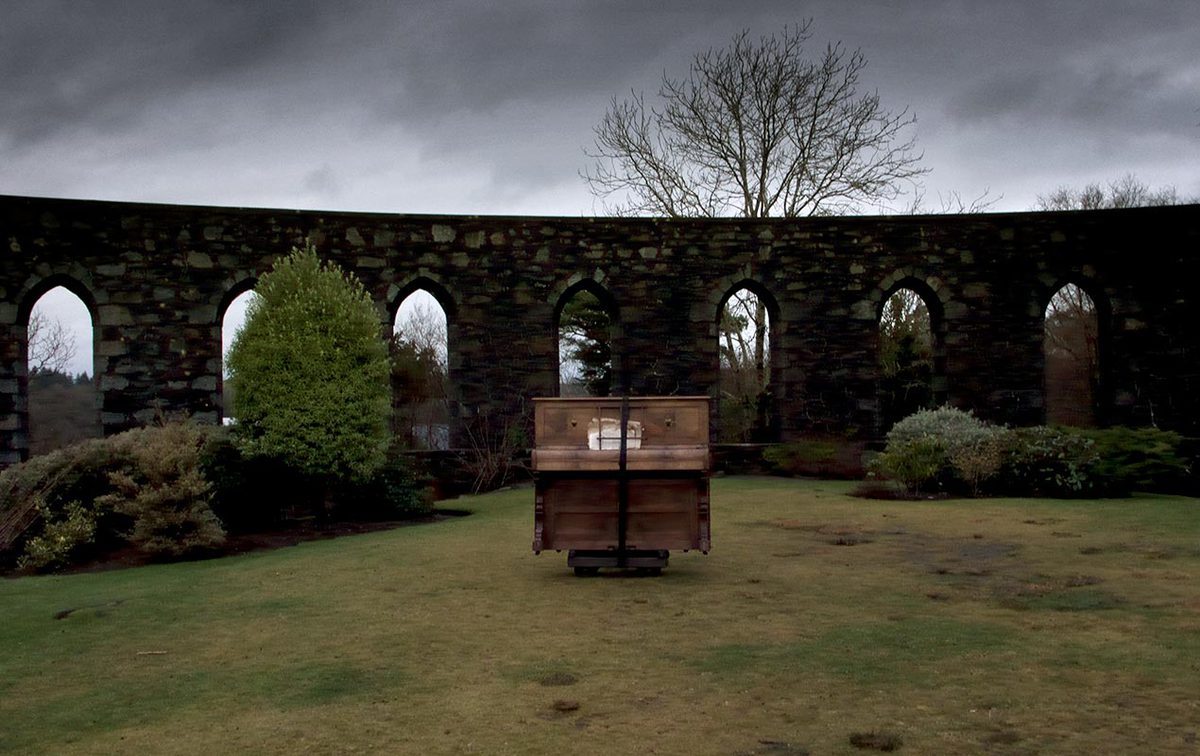
Ergin Çavuğlu, Voyage of No Return, view from the video-installation, 2009.
The piano, pushed from one border to another signifies how personal and cultural identities are negotiated from the moment the migration begins. The moving memory, things learned, suppressed knowledge, prohibited nostalgia, concrete exchanges and cultural mobility already come into play as migrants cross the border.
In the video, the piano, as a “threshold-sound” represents a rupture from the past, a metaphor of “unbelonging.” Like its owners, the piano belongs neither there nor here. Like the migrant family, it has to find its new place and sound, its identity and language. The body of the migrant is a magnetic region composed of different tempos; one foot in the forgotten past, the other in the unknown future. The piano is an “unstable sign” of the illimitable aspect of sound and music. It belongs to a different moment when it is impossible to fully reconstruct stories accumulated and experiences lived up to that point; that moment is such that while, on the one hand, certain things continue to take place, on the other, other things continue to emerge. People gather around the piano as if it was a magnet. Their only aim is to carry this heavy musical instrument from one side of the border to the other. This way, they transform the frontier into a path. The unplayed piano is heavy baggage, full of excitement, expectation, hope, hesitation, anxiety and fear. It bestows rhythm upon the body without belonging, and its “language” and meaning to the human voice that has lost its plasticity and has been reduced to a murmur.
Therefore, the piano, as the protagonist of Çavuşoğlu’s video, is a metaphor for the resonance produced by the migrant’s exhausted body and “weak voice.” The new life is about to emerge.
Choreography of Sound: The Piano Waiting for Its Performer
In Voyage of No Return (2009), a five-screen video-installation by Çavuşoğlu, co-written with film writer and actor Arnold Barkus, two men carry a piano along the winding road leading to the hill where McCaig’s Tower stands in the town of Oban in Scotland. On the same road, a father and his son talk about the journey the young man is planning. As they walk towards the entrance gate of the coliseum like tower perched on the hill overlooking Oban Bay, their conversation about borders and traveling take on quite a philosophical character.
In their dialogue based on Italo Calvino’s Invisible Cities (1972), the father is thoughtful and cautious regarding the journey, while the son is open and brave. When they arrive at the tower’s gate, the old man tells his son that “frontiers are real… and not to be treated lightly.” Precisely at this point, the young man picks up a page scattered from the scorebook on the piano, and responds to his father: “Sometimes the frontier between ways of life is invisible or intangible. Maybe we shouldn’t even try to understand other cultures. It’s not like their poetry can be translated.”
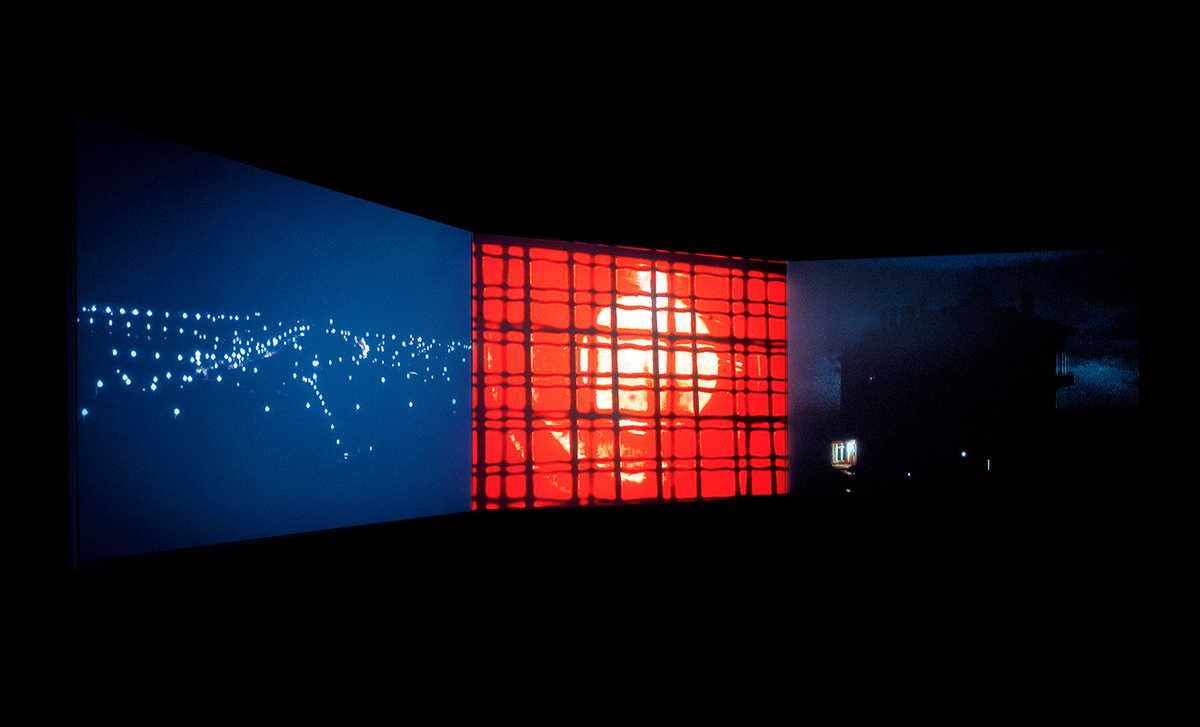
Ergin Çavuşoğlu, Poised in the Infinite Ocean, view from the video-installation, 2004.
Just like the topography of the location, where sea and land touch, the border between dream and reality becomes blurred throughout the film, suggesting that it is equally difficult to distinguish the two, as it is to separate lands, identities and cultures.
From the vaulted apertures of the tower’s circular space, the father and son view the ocean. The sky is overcast. At the harbor, a small group of people are waiting in silent melancholy to board a ship, with their relatives that have come to see them off. The father heartens his son to set out on the journey: “You should leave, while you are still young. Explore every coast. Find this city and come back to tell me if my dream matches the reality.” And the young man replies: “It knows only departures, not returns.” Then the father makes a confession regarding his lifelong doubt and fear of the journey: “Like everyone, I’m afraid of becoming a stranger to myself.”
At the same time the dialogue between father and son ends, the passengers board the ship, and the piano reaches the tower. One of the men lifts the lid of the piano, organizes the scorebook, puts it in place, and then both men depart. While this happens, the music dominated by strings we have been listening to throughout the film has ended, now we hear a melody from the keyboard of a single piano.6 Sound absorbs sound, sound overcomes sound, sound defeats sound. In a “threshold-space” that belongs neither to earth or sky, land or sea, among the sounds of the sea and wind that do not belong to language, the piano appears, for now, to have found or regained its own sound, its own rhythm until its performer comes.
It is significant that the musical scorebook reappears at the end. Even though musical notation is a system of signs more universal than language, its production, use and meaning, are based to a large extent on social and cultural conventions. Within this framework, Kathleen Coessens interprets musical notation as a written language and musical performance as a spoken language. The performer, the performance and the period will interpret the composition time and time again. From notation to sound and from there to the meaning of sound, the transition will never be seamless and direct, because the pattern of rhythms and harmonies expressed by the symbols of annotation will vary according to the reading and interpretation. The body of the performer is the interface between notation and sound; its presence will intertwine with time and space and, in this way, the performer will realize, in the present, the notation fixed in time, and cast it into the future.7
Musical notation is a cultural form. The musical score that reappears in the final scene of Voyage of No Return will wait for its performer. When “sound migrates” there are many acoustic possibilities and the choreography of sound is diverse. A body in motion, an interpreter changing their instrument, different interpretations, translations or the impossibility to translate, all of that is part of the music and add alterity and richness to communication. The piano, carried and relocated, bears the promise of the relational soundscape.
Just like the circular architecture of McCaig’s Tower the narrative of the film turns, and turns, and this way, doesn’t really end. The architecture transforms the film into an open and variable framework of movement, sound, word and music. Thus, a path is not necessarily a physical journey from one place to another.
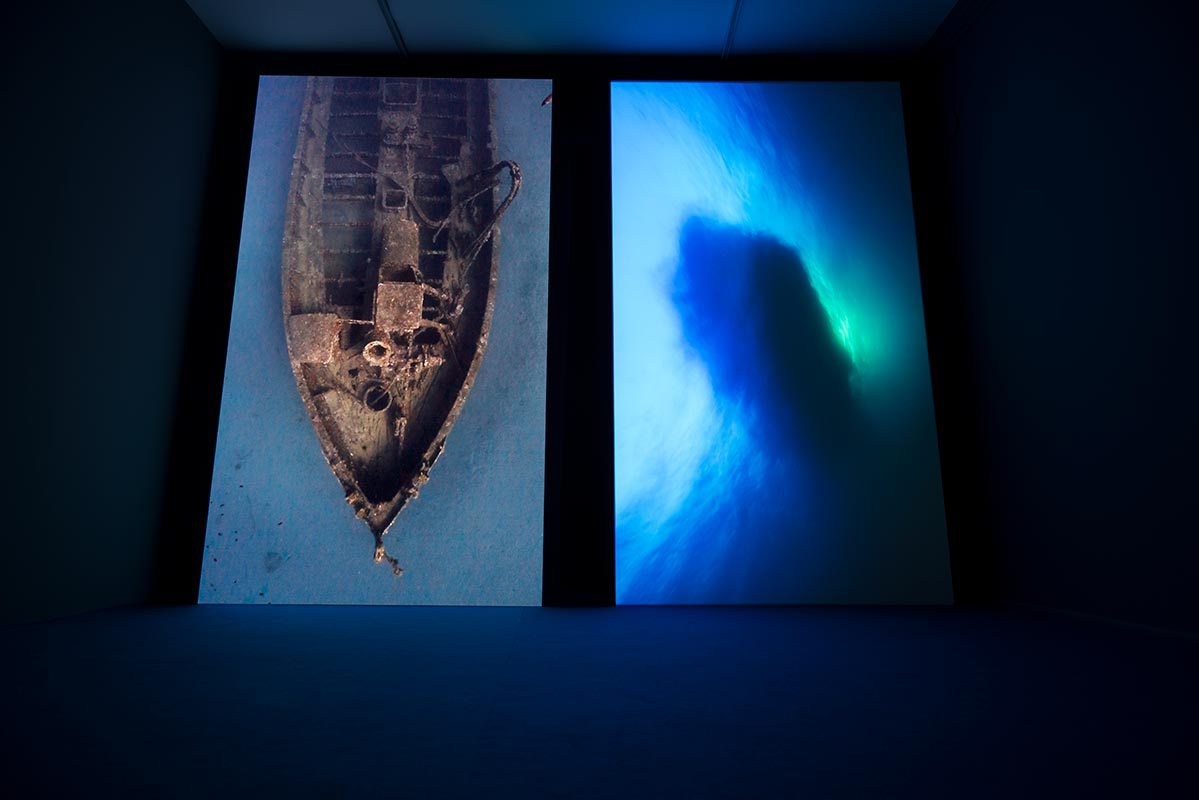
Ergin Çavuşoğlu, Lundy, Louis, Barge and Troy, view from the video-installation, 2014.
Spatial Magnetization: The Pulsating Image
In his book Audio-Vision: Sound on Screen, film theorist Michel Chion uses the term “magnetization,” a form of mental spatialization, to explain how the filmic image attracts sound in space. In monaural film screening, where there is a single source of sound regardless of where the sound comes from, the viewer psychologically locates the sound in the space of the image.8 Chion also emphasizes that in order for a sound to be magnetizable, it must maintain basic spatial stability: “If sound constantly moves back-and-forth among loudspeakers, the image will have a harder time absorbing it, and the sound takes on a centrifugal force of its own that resists visual ‘attraction.’”9 However, according to Chion, spatial magnetization emerges more clearly and effectively when sounds synchronize with images, in other words, when we hear and see at the same moment, and when the stability and clarity of sound in the hall is at its best.10
However, in multi-screen and multi-channel installations like Çavuşoğlu’s, the relationship between sound and image is more intricate, and that spatial magnetization operates in a much more open manner. Since neither image nor sound move in a linear, consecutive structure, they are both autonomous from each other, and, even in cases where they work against each other, they are interconnected in one way—in their real or imaginary, linguistic or poetic dimensions. It is the viewers/listeners who will sense the spatial coordinates of this relationality and give life to sound. The artist, just like a choreographer, like a rhythmanalyst, scatters time and sound across the gallery space, thus creating both visual cartography and a soundscape.
In Çavuşoğlu’s two sound channel, three-screen installation shot in the Bay of Biscay, titled Poised in the Infinite Ocean (2004), we are in the field of spatial magnetization. On one screen, we see the sea and the sky meet along the horizon. On another one, we see the historical Château d’Ilbarritz, on the hill facing the ocean. On the third one, the city of Biarritz and its lighthouse are seen from above. The ocean scene on the middle-screen is an open landscape that acts as a border between the two others. When day turns to evening and the storm reaches the town, the beacon turns red, to warn seafarers of sharp rocks just beneath the sea surface and the pounding ocean waves. What interrelates these three separate screens is the voiceover we hear among the sound of the storm. William Langewiesche reads out a chapter from his book titled The Outlaw Sea: A World of Freedom, Chaos, and Crime (2005) about a cargo ship and the tough and dangerous life that develops around it. We learn that Kristal, which is called the “iron house” by its crew composed of people coming from different countries, has set out on a journey passing through the Suez Canal and the Strait of Gibraltar. Only six-hour guard duties disrupt the monotonous days on the sea and all the crew members talk about is the ship itself, as after the long months they have spent together, there isn’t much left to discuss. As we listen to their story, we look out at the chaotic universe.
There is a continuous relationship between the story of the ship, the house we see, and the sea. On the central screen, we watch the red light of the tower in close-up. The beacon pulsates, keeping the rhythm of a metronome. Nature’s non-linear, cyclical rhythm operates both with and against the metronome, the primary and linear rhythm of all social activities, transforming resonance into dissonance. The story of the ship en route caught up in the storm adds up to this tension.
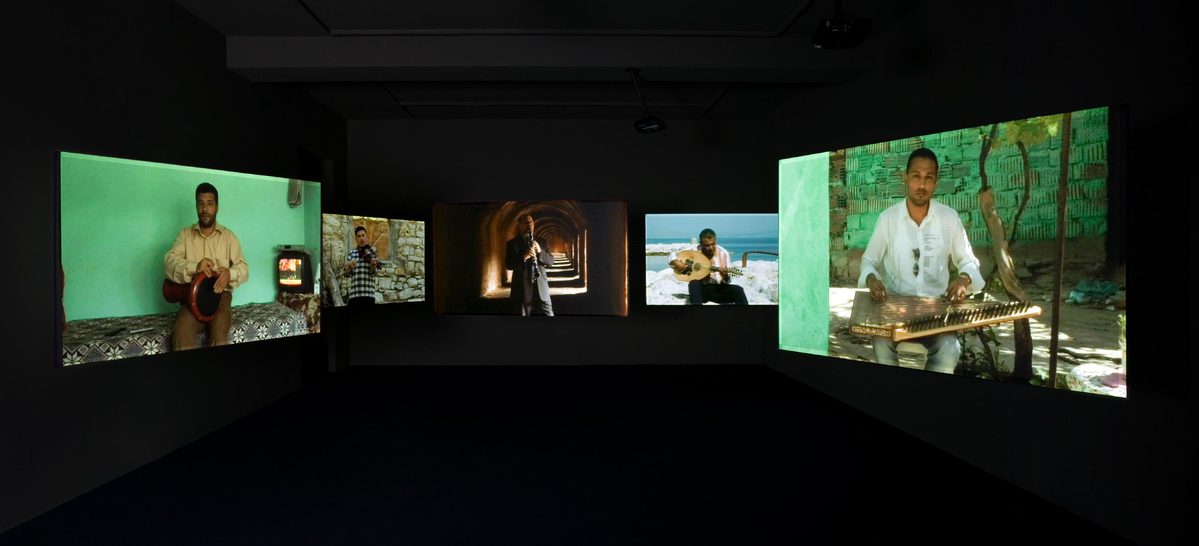
Ergin Çavuşoğlu, Quintet Without Borders, view from the video-installation, 2007.
Time is full of variations cast in space which are such that they do not only disseminate on and across moving images, but they also attract their viewer/listener towards them like magnets. The viewer must scan the scattered audio-visual sequence first with their eyes and ears, and then with their bodies, examine it, and then reach a meaning by determining the interval, proximity and distance of image and sound. Here, the “migration of sound” comes into play in a context that establishes a mutual relationship between the universe and language; as the artist, in his moving images, connects words and sounds, emotions and sensations. At times, the voiceover settles within the image as a “surplus sign,” as it overcomes the sound of thunder, and begins to pulsate in the image and the space as “magnet-sound.” The surplus sign, as excess, is a sensory, informative, semantic, narrative, structural or meaningful value we hear in the space and which we reflect onto the image. This value means that as viewers/listeners, we have added what we hear to the image we see.
Sound Fluctuates. Music Resonates.
Sound is fluctuation and as the content of its fluctuations shape time, space, movement and being, the sound fluctuations also pose a philosophical problem: the relationship between repetition and becoming—the relationship of the Same to the Other.11
In Çavuşoğlu’s two-screen installation titled Lundy, Louis, Barge and Troy (2014) we look from beneath the surface of the sea, both at the rhythm of past time embedded on the seabed and at the rhythm of present time above the water. On one of the two large vertical screens, we see from above the wreckage of ally ships which sunk during the Dardanelles campaign of World War One. On the other screen, we adopt an inverted point of view and watch the silhouettes of ships sailing across the same point of the sea. These images are accompanied by the breathing sound of the underwater diver operating the camera.
When we consider migration policies implemented along European borders, Çavuşoğlu’s work acquires further meaning. It should suffice to remember the mass-migration triggered by civil war in Syria that has continued since 2011. Nilüfer Demir made a heartrending photograph of Alan Kurdi, a three-year-old Syrian boy, his dead body lying faced down, washed up on the beach in Bodrum in the southwest of Turkey, after the inflatable boat he and his family were on capsized.12 Another drama that was reported in the media is the story of young musician Barış Yazgı, whose lifeless body was found along with his violin box.13
Evrim Hikmet Öğüt, examining the experience of Iraqi-Chaldean migrants, asks “What use is music for a migrant?” and continues as follows:
What does music have to do with survival, with continuing?
Can music build a temporary space, a home for a migrant in limbo; or if nothing else, a sense of togetherness? Can music serve as the tool of mourning, or healing? Can it at least put the bread on the table?14
So I would suggest that sound fluctuates, taking the migrant body to its “home” of musical resonances.
Rhythmical Repetition, Arhythmical Difference
No doubt, Lefebvre does not imagine rhythm as independent of the renewal and repetition of movements, gestures, actions and states; there will always be something new and unexpected that seeps into this repetition: difference.15
Çavuşoğlu’s Quintet Without Borders (2007) addresses via music the concept of cultural difference. The protagonists of the video are members of Selim Sesler and His Orchestra, composed of five virtuoso Romani musicians from Keşan, the centre of the Romani community in Turkey, described by Çavuşoğlu as “an outpost of the idea of Europe.”

Ergin Çavuşoğlu and Konstantin Bojanov, Momentum Keşan I, bronze, 2007.
In collaboration with Bulgarian director Konstantin Bojanov, Çavuşoğlu asked the musicians to perform a few songs from their traditional repertoires, along with their own instruments. Musicians were asked to choose an “ideal” performance area in Keşan where the music would resonate best. The multi-screen installation which was created has a spatial organization that recalls eclectic architecture and the ways Roma people use space. Darbuka-player Serkan Koçan performs on his bed; violin player Sezer Gümüş in front of a derelict 18th century stone house; oud-player Turan Gümüş beside a jetty on the shore; qanun-player Bülent Sesler in his garden, next to a pigeon cage; clarinet master Selim Sesler beneath the vaults of the cloister of an old brick factory.
Those different solos played together on different screens create a harmonious piece of music where sound and images are more or less synchronized. In other words, sounds are migrating from one screen to another and combine. The performances of the musicians create the impression of a quintet playing Turkish, Greek, Jewish, Arab, Bulgarian, Roma, Armenian and a great number of other musics coming from other traditions in the same room. In addition, a group of bronze and aluminum sculptures are also included in the exhibition. These sculptures are the combination of traditional musical instruments used by Romani musicians of Keşan16 and everyday household objects used by the people living in Keşan. Thus, the audio-visual form of the work transverses a rich cultural tradition. Both alone and together, the musicians place an arhythmical difference within rhythmical repetition. The audio-visual elements in Quintet Without Borders correspond to the untranslatable, thus presenting an alternative to both linguistic and visual representation and communication; they produce difference and otherness.
“Magnet-sounds” and images, wandering next to, around, inside and beyond meaning reject subjection, interdependence, consistency, continuity and permanence. In this manner, Çavuşoğlu tells us that music can be imagined as “untranslatable,”17 that it cannot be fixed down as a combined single language or a sound and that it cannot be expressed with a single identity without splitting up. The performances of musicians on different screens, their “overflowing existence,” their fluid identities announce a plurality of languages that rejects the search for origins and cultural borders.
Sound, as an aural form of information, or a tool of coordination, places us within a space where we are in motion. The living body not only makes sounds, but it also attracts sound to itself, it lends life to sound. As much as spatial context, our perception is also in a close relationship with sound. Sound “migrates” and it is experienced in relationship with other sounds; spatial contexts give the sound its voice because sound resonates and echoes, fluctuates and disseminates, joins other sounds, increases, diminishes and fades away. As much as identities (bodies), movement and migration transform and enrich music and culture (language), too.
Editor: Vincent Simon
Translated from Turkish by Nazım Dikbaş.
Cover: Ergin Çavuşoğlu, Quintet Without Borders, view from the video-installation, 2007.
